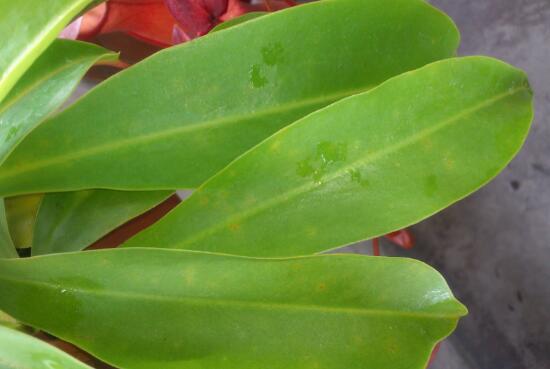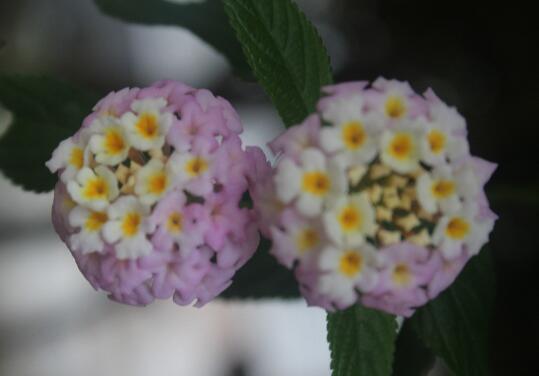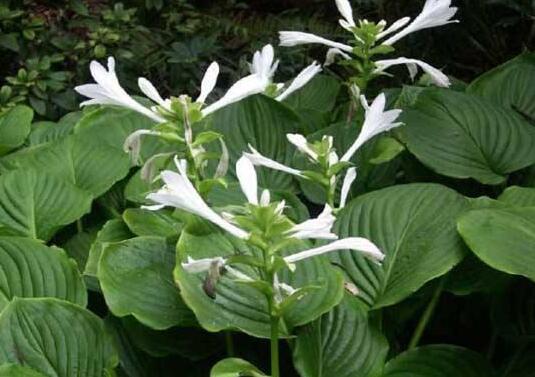Pitcher plant insect growth how to do, pitcher plant pest control / 1 insect 2 disease spraying
When it comes to pitcher plants, everyone will think of its function of catching mosquitoes and flies, but did you know that even such a mosquito repellent plant can grow insects? Because the pitcher plant is a tropical plant, its growth will be affected in our country, and it will be attacked by diseases and insect pests if we don't pay attention to it. What about the pitcher plant growing insects? The following is pitcher plant pest control, let's go and have a look.
First, pitcher plants grow bugs how to do, spray

It is understood that pitcher plant is a tropical plant, breeding in most parts of our country, will have a certain impact on its growth, a little attention, pitcher plant will be attacked by diseases and insect pests. What about the pitcher plant growing insects? in fact, it is very simple, just spray. As for what kind of medicine to spray, there is a detailed introduction in the pitcher plant pest control. Let's move on.
II. Pest control of pitcher plants
According to the editor's inquiry, if the pitcher plant is not raised strictly according to the breeding method, the pitcher plant is easy to get leaf spot, root rot, sunburn and so on. Among them, leaf spot disease and root rot disease are more harmful, and they will also be invaded by shell insects. The specific symptoms and control methods are as follows:
1. Root pink scale
A kind of shell insect that mainly feeds on the fresh juice of pitcher plants. Symptoms of infringement: the leaves of pitcher plants yellowed, withered, and even fell, seriously affecting the ornamental effect of pitcher plants.
Control method: if a small amount of root pink scale is found, it can be wiped off with a brush or burnt cloth, then the diseased leaves can be cut off and burned centrally to reduce the source of the disease. finally, it can be sprayed with 1000-1500 times EC or 25% Icas EC to check and kill, pay attention to both the positive and negative sides of the branches, which can improve the insecticidal rate.
2. Leaf spot
One of the diseases and insect pests of pitcher plants, which mainly infects its leaves. Symptoms: waterlogged and small spots appear on the leaves, gradually expanding, forming oval spots, brown. A black mildew layer was produced in the disease, which ruptured in the later stage. Seriously affect the plant growth and ornamental effect.
Control methods: timely removal of diseased leaves and centralized destruction, in order to reduce the source of the disease; when the disease occurs, spray germicidal or 1000 times antibacterial solution, spray evenly, the whole plant should be sprayed to the back of the leaves.
3. Root rot
In the summer high temperature environment, if not ventilated, watering water contains limestone, then pitcher plants will suffer from root rot. Symptoms: the aboveground leaves are yellow and wilting gradually. The underground roots turn brown and rot, and do not grow new roots for a long time.
Prevention and treatment methods: in the early stage of the disease, you should spray chemicals in time, you can choose Likujing, Root rot Ling, etc., and spray it after diluting it into a solution with clear water. In order to avoid rotting roots, peat soil, dried cow dung, rotten leaf soil and sand can be mixed and hung in the greenhouse to provide proper shade.
4. Anti-freezing and insect prevention
Pitcher plants are tropical plants, which are prone to frostbite when the temperature is low, and there are many small patches on the leaves. If you live in a damp and dark environment for a long time, you are easy to get coal fouling disease. Summer is also attacked by pests, such as thrips and shell insects.
Prevention and treatment: keep warm in time when the temperature drops, and it is best to put it in an air-conditioned room. In order to avoid being attacked by pests, spray special insecticides in time. Timely ventilation, see the sun, find bugs and clean up in time.
On pitcher plant pest control, the editor introduced here, I believe that when you encounter pitcher plant worms or get sick, you should know how to do it! Generally speaking, pitcher plants can drive worms, but they can also grow worms, so for the sake of unnecessary trouble, we should pay attention to care.
Prevention and control of main diseases and insect pests of pitcher plant
Prevention and control of main diseases and insect pests of pitcher plant
Leaf spot disease
Symptom characteristics
There are many small spots on the leaves, which gradually expand to form large brown spots. A black mildew layer is produced locally, which will gradually break. Affect the growth and ornamental of the plant.
Prevention and cure method
Strengthen management, reasonable maintenance, enhance the disease resistance of the plant.
When the disease occurs, spray fungicide sterilization, spray 1000 times antibacterial agent solution, spray evenly, the whole plant should be sprayed to the back of the leaves.
Root rot disease
Symptom characteristics
When the pitcher plant grows slowly and its disease resistance decreases, various diseases will come to the door. During the onset of root rot, the aboveground leaves were yellowing and wilting gradually. The underground roots turn brown and rot, and do not grow new roots for a long time.
Root rot is caused by the invasion of Fusarium. At first, it only begins to rot in the wound, but gradually it will seriously damage the whole plant. Low temperature or too much watering can cause the disease.
Prevention and cure method
Pitcher plants like warm and hot environment, the growth temperature is not lower than 24 ℃, and the high temperature and foggy environment is more favorable for growth. In order to avoid rotting roots, peat soil, dried cow dung, rotten leaf soil and sand can be mixed and hung in the greenhouse to provide proper shade.
Put in the high temperature environment in summer, it is required to be well ventilated, and the water should not contain limestone when watering. Pouring some cow dung water during its growing period is helpful to root growth.
In the early stage of the disease, the medicine should be sprayed in time. Choose Likujing, root rot spirit, many. Fu. Zinc can be diluted into a solution with water and sprayed.
The main harm of insect pests
Prevention and cure method
The shell worm was sprayed with 2000 times of 40% dimethoate EC.
Anti-freezing and anti-insect
Symptom characteristics
Pitcher plants are tropical plants that are prone to frostbite when the temperature is low. There were many small patches on the leaves last time. Living in a damp and dark environment for a long time, it is easy to get coal fouling disease. Summer is also attacked by pests, such as thrips and shell insects.
Prevention and cure method
Keep warm in time when the temperature drops, it is best to put it in an air-conditioned room.
In order to avoid being attacked by pests, spray special insecticides in time. Timely ventilation, see the sun, find bugs and clean up in time.
What about the long worms of flytrap, pest control of flytrap / leaf soft dehydration disease stop illuminating
When it comes to flytrap, we all know that it is a mosquito repellent plant, its clip can attract insects, and then kill them at once. But does everyone know? If the maintenance is improper, the flytrap that can eat insects will also grow worms, what should we do at this time? The following are several common diseases and insect pests of the flytrap, of which the leaf soft dehydration disease of the flycatcher should be paid special attention to. Follow the editor to find out.
First, what about the flytrap and worms? use smoke and water.
Keeping the flytrap indoors is not like the wild, everything needs to be created by ourselves, and once it is not raised in accordance with the method of raising the flytrap, it will grow worms, what about the flytrap worms? At this time, we should not be in a hurry, but should calmly find the cause, and then solve the problem. If you don't know what kind of bug it is, you can use the following methods:
If you are a friend who smokes, then it is very simple. Once you find that the flytrap grows worms, you can solve it with smoke. Specific operation: soak the cigarette butts in water for two or three days, then pour the water into the flowerpot, and the worms will be gone in a few days. Of course, the effect of this method is slow, only when specific diseases and insect pests are found, and then solve the problem. Let's move on to the specific prevention and control of flytrap diseases and insect pests.
2. Diseases and insect pests of flycatcher
1. Nematodes
Although the flytrap can catch insects, it is also afraid of insects. According to the editor's inquiry, the worms found by flower friends in the fly-catching grass are mostly nematodes, and the reason for attracting them is that the soil contains humus.
Symptoms and solutions: nematodes are divided into exotic and introverted nematodes, in which exotic nematodes only eat rotten things and can be changed after they are found, while endoparasitic nematodes are parasitic in the flytrap and cannot be eradicated.
2. Soft dehydration of flycatcher leaves.
If you want the flytrap to grow big, you have to shine more on the sun. But many flower friends will find that in the summer, their flytrap leaves will be inexplicably soft and yellow. How is this going on? In fact, this is the flytrap is sick, and is suffering from leaf soft dehydration disease.
What is the soft dehydration disease of flytrap leaves? To put it simply, flytrap is a plant that likes light and humid environment. In summer, because of the muggy weather, the water required can not meet the requirements, and too strong light will make the flytrap get leaf soft dehydration disease. In popular terms, it can also be said that the flytrap suffered from heatstroke.
Ye Tuo soft water disease solution: in the breeding process, flycatcher leaf soft dehydration disease many flower friends will encounter, at this time we must pay attention, it is best to achieve the following two points:
① is caused by high temperature and high humidity, so it is found that the flytrap is suffering from leaf softening disease, so you should stop exposing the sun and watering immediately. After 2-3 days, the basin soil should be naturally dried before watering to control the amount of water. Note: choose to water in the evening or when it is cool at night.
The method in front of ② is not serious, if the disease is serious, in addition to cutting off the diseased leaves, but also need to change the basin to pour out the matrix, waiting for the matrix natural wind to open to loose re-use.
3. Soft rot
One of the diseases and insect pests of flytrap, it is the most serious disease of flytrap, and the plant will die gradually after the disease.
Solution: for soft rot, we mainly take preventive measures, spray 50% carbendazim 600 times 800 times once a month, or 1000 times methyl thiophanate solution for prevention and treatment.
Although it is a bit strange to be afraid of insects as a plant that can catch insects, it is relieved to think that as long as it is a plant, it can not escape the damage of insects. After all, nature is so magical. On pitcher plant pest control, the editor introduced here, I believe that when you encounter pitcher plant worms or get sick, you should know how to do it!
- Prev

How to deal with the long insects of the orchids, the pest control of orchids/2 pests 2 diseases
In the process of breeding ball orchids, the last thing people want to encounter is definitely diseases and insect pests. This kind of problem not only affects the beauty of the plant, but also poses a great threat to the plant. What about the long insects in the ball orchids? How to prevent and control diseases and insect pests in orchids
- Next

What to do with the growing insects of the flower of the jade hairpin, the pest control of the flower / 2 insect pests 2 diseases
In the process of cultivating jade hairpin flowers, people do not want to encounter such problems as diseases and insect pests, which not only have a great impact on the ornamental of jade hairpin flowers, but also lead to plant death if they are not treated for a long time. What about the jade hairpin flower worms? How to prevent and control the diseases and insect pests of hairpin flower
Related
- Fuxing push coffee new agricultural production and marketing class: lack of small-scale processing plants
- Jujube rice field leisure farm deep ploughing Yilan for five years to create a space for organic food and play
- Nongyu Farm-A trial of organic papaya for brave women with advanced technology
- Four points for attention in the prevention and control of diseases and insect pests of edible fungi
- How to add nutrient solution to Edible Fungi
- Is there any good way to control edible fungus mites?
- Open Inoculation Technology of Edible Fungi
- Is there any clever way to use fertilizer for edible fungus in winter?
- What agents are used to kill the pathogens of edible fungi in the mushroom shed?
- Rapid drying of Edible Fungi

